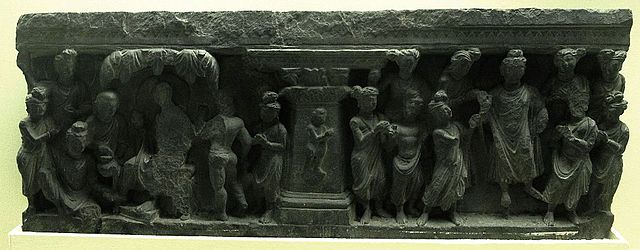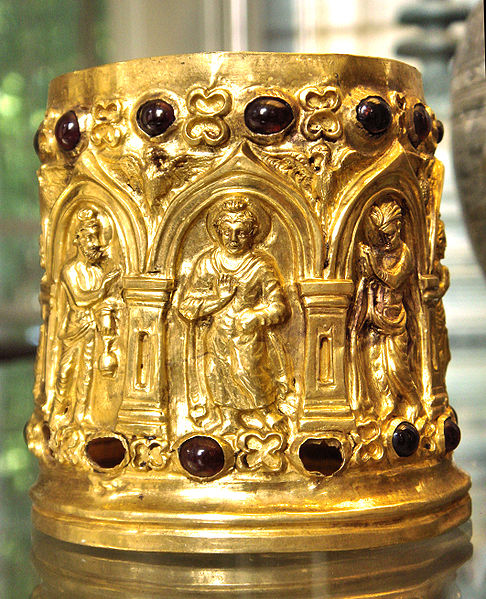Rāhula was the only son of Siddhārtha Gautama, and his wife, princess Yaśodharā. He is mentioned in numerous Buddhist texts, from the early period onward. Accounts about Rāhula indicate a mutual impact between Prince Siddhārtha's life and the lives of his family members. According to the Pāli tradition, Rāhula was born on the day of Prince Siddhārtha's renunciation, and was therefore named Rāhula, meaning a fetter on the path to enlightenment. According to the Mūlasarvāstivāda tradition, and numerous other later sources, however, Rāhula was only conceived on the day of Prince Siddhartha's renunciation, and was born six years later, when Prince Siddhārtha became enlightened as the Buddha. This long gestation period was explained by bad karma from previous lives of both Yaśodharā and of Rāhula himself, although more naturalistic reasons are also given. As a result of the late birth, Yaśodharā needed to prove that Rāhula was really Prince Siddhārtha's son, which she eventually did successfully by an act of truth. Historian H.W. Schumann has argued that Prince Siddhārtha conceived Rāhula and waited for his birth, to be able to leave the palace with the king and queen's permission, but Orientalist Noël Péri considered it more likely that Rāhula was born after Prince Siddhārtha left his palace.

The Arhat Rāhula, Nanbokucho period, Japan
Just before the prince leaves the palace for the spiritual life, he takes one look at his wife Yaśodharā and his just-born child. 7 years after attaining Buddhahood the Buddha visited Kapilawastupura again on the behalf of Minister Kaludaiy
Ordination of Rāhula, Indian Museum, Kolkata
Statue of Rāhula as monk at Ping Sien Si, Pasir Panjang, Perak, Malaysia
Siddhartha Gautama, most commonly referred to as the Buddha, was a wandering ascetic and religious teacher who lived in South Asia during the 6th or 5th century BCE and founded Buddhism. According to Buddhist legends, he was born in Lumbini, in what is now Nepal, to royal parents of the Shakya clan, but renounced his home life to live as a wandering ascetic. Buddhists believe that after leading a life of mendicancy, asceticism, and meditation, he attained nirvana at Bodh Gaya in what is now India. The Buddha then wandered through the lower Indo-Gangetic Plain, teaching and building a monastic order. Buddhist tradition holds he died in Kushinagar and reached parinirvana, final nirvana.
Statue of the Buddha, preaching his first sermon at Sarnath. Gupta period, c. 5th century CE. Archaeological Museum Sarnath (B(b) 181).
The Buddha, Tapa Shotor monastery in Hadda, Afghanistan, 2nd century CE
One of the earliest anthropomorphic representations of the Buddha, here surrounded by Brahma (left) and Śakra (right). Bimaran Casket, mid-1st century CE, British Museum.
Māyā miraculously giving birth to Siddhārtha. Sanskrit, palm-leaf manuscript. Nālandā, Bihar, India. Pāla period








